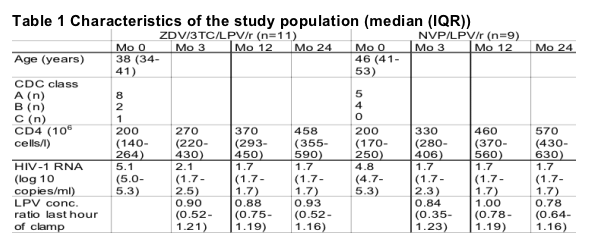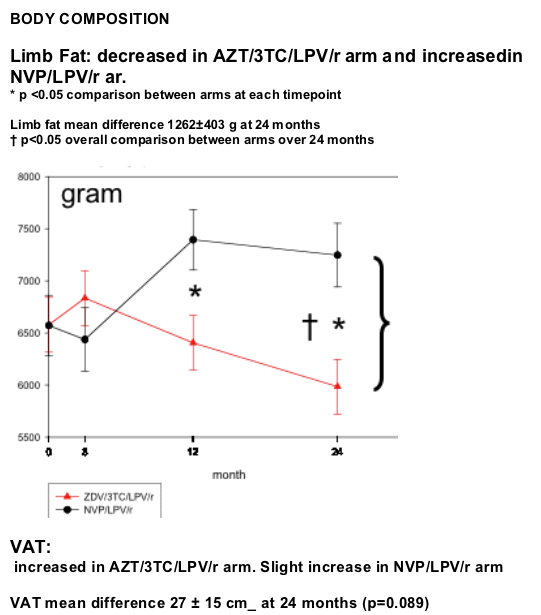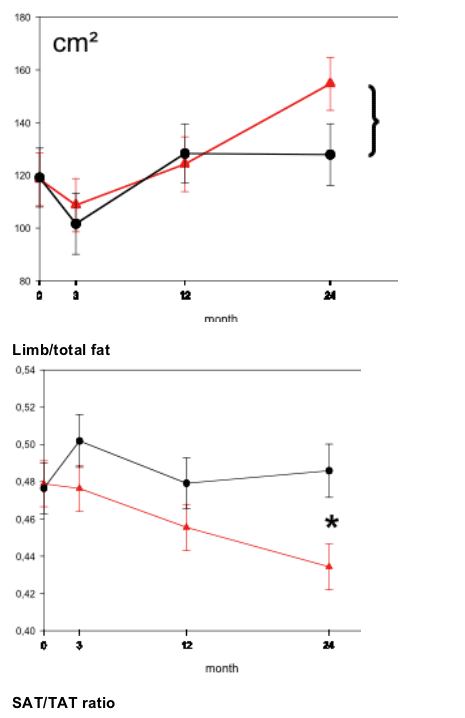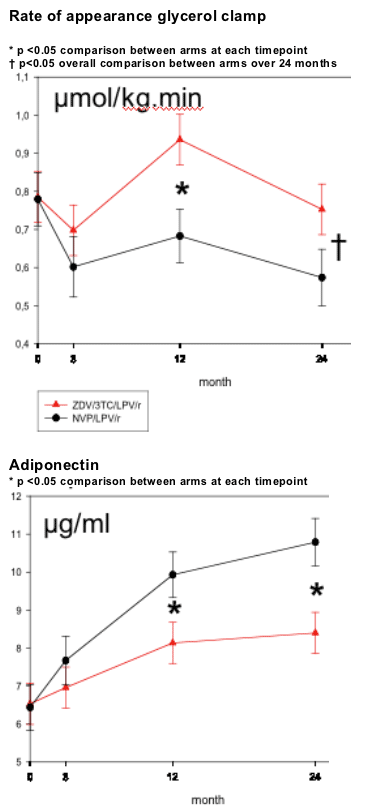 |
 |
 |
| |
Zidovudine/lamivudine persistently contributes to peripheral insulin resistance by a body composition-independent mechanism demonstrated by repeated clamp studies during 2 years of first line ART with zidovudine/lamivudine/lopinavir/r
|
| |
| |
Reported by Jules Levin
4th IAS Conference, 22-25 July, Sydney, Australia
MGA van Vonderen1, RME Blumer_, E Hassink_, J Sutinen4, MT Ackermans_, MA van Agtmael1, H Yki-Järvinen4, SA Danner1, HP Sauerwein_ and P Reiss 2,3 (on behalf of the MEDICLAS study group).
1 VU University Medical Center, Amsterdam, the Netherlands; _Academic Medical Center, Amsterdam, The Netherlands; _International Antiviral Therapy Evaluation Center, Amsterdam, The Netherlands; 4Helsinki University Central Hospital, Helsinki, Finland
AUTHOR INTERPRETATION
ZDV/3TC contributes to early (3 mos) reduction in peripheral glucose uptake, prior to a demonstrable loss of limb fat and/or gain in VAT
This occurred in the absence of reduced adiponectin
Potential mechanism: ZDV mediated mitochondrial dysfunction
of skeletal muscle? (similar to d4T in healthy volunteers)
ZDV/3TC-associated insulin resistance showed a
sequential onset:
--Peripheral glucose uptake reduced within 3 mos, persisting over time, to which onset of limb fat loss and blunted adiponectin increase may have contributed
--Followed after 12 mos by insulin resistance concerning lipolysis,
--and at 24 mos by insulin resistance concerning hepatic glucose production
--Potential mechanism: ZDV mediated (mitochondrial) toxic effects on adipocytes/ hepatocytes?
BACKGROUND
Lipodystrophy is associated with insulin resistance in multiple metabolic pathways. The sequence of onset of disturbances in glucose metabolism is unknown.
NRTI are thought to contribute to insulin resistance mainly by induction of lipoatrophy. However, recently stavudine was shown to reduce peripheral glucose disposal within 4 weeks in healthy volunteers without changes in fat distribution (Fleischman A. Am J Physiol Endocrinol Metab. 2007 Jun;292(6):E1666-73).
We previously found that ZDV/3TC/LPV/r, but not NVP/LPV/r, after 3 months significantly decreased insulin mediated peripheral glucose disposal and increased fasting lipolysis without significant changes in fat distribution. Changes up to 24 months are now reported.
OBJECTIVE
To evaluate glucose metabolism and body composition prospectively after start of ART in HIV-1+, ART-naive men comparing a NRTI-containing versus a NRTI-sparing regimen.
METHODS
HIV-1+, ART-naive men were randomized to lopinavir/ritonavir(400/100mg bd)+ZDV/3TC or lopinavir/ritonavir (533/133mg bd)+nevirapine in a prospective, randomized, single blinded trial.
Insulin sensitivity (hyperinsulinemic (20 mU/m_/min) euglycemic clamp combined with stable istotopes) and body composition (whole body DEXA and abdominal CT scan) were assessed before and after 3, 12 and 24 months of ART.
RESULTS






|
| |
|
 |
 |
|
|